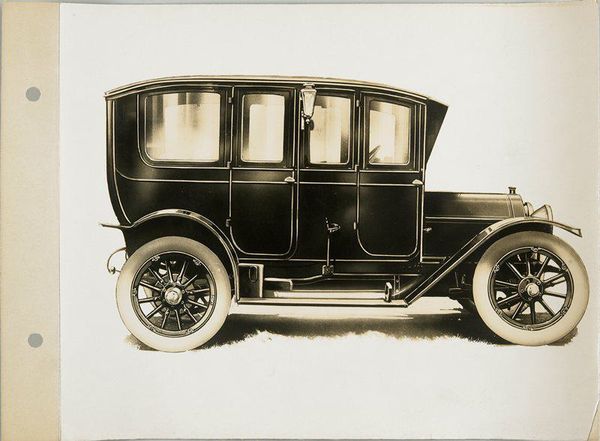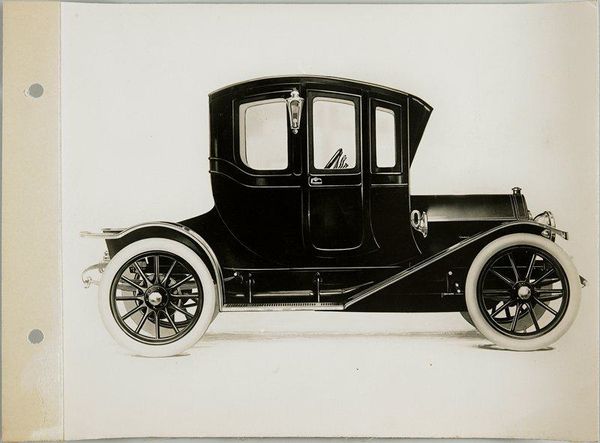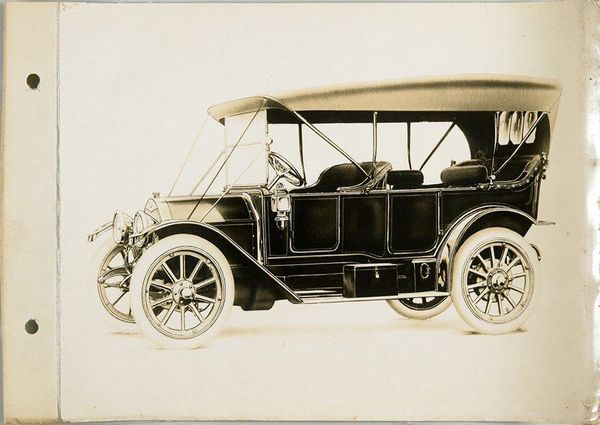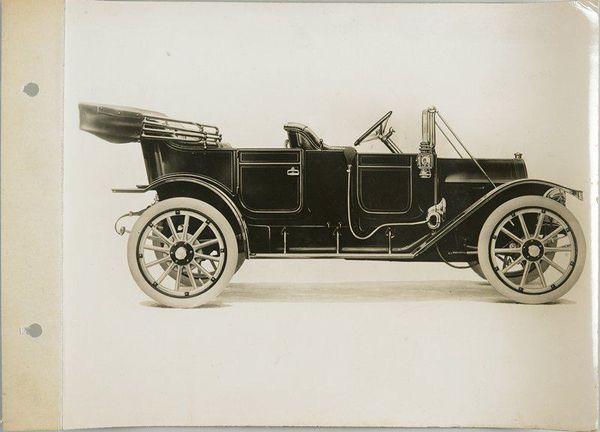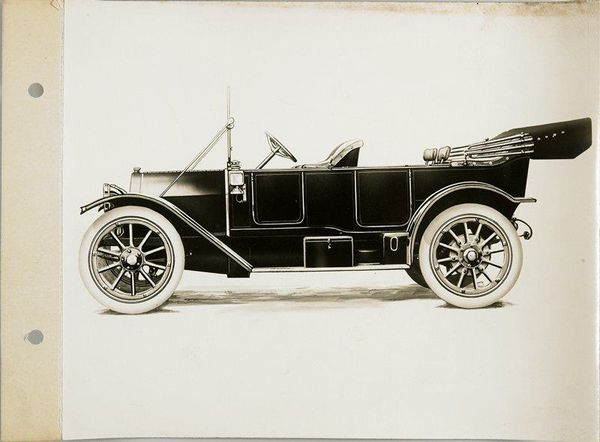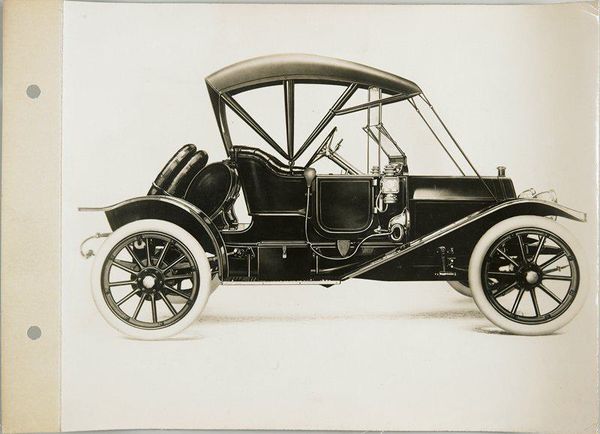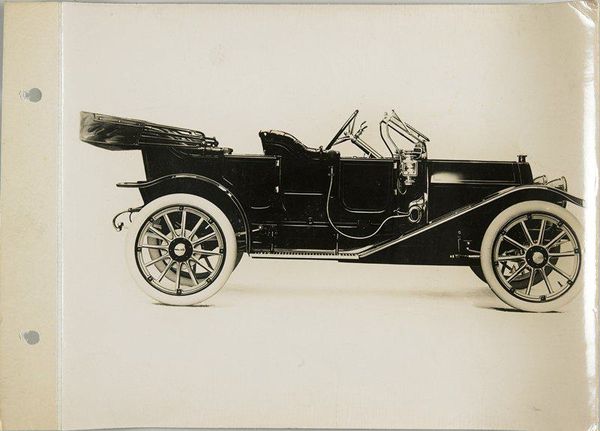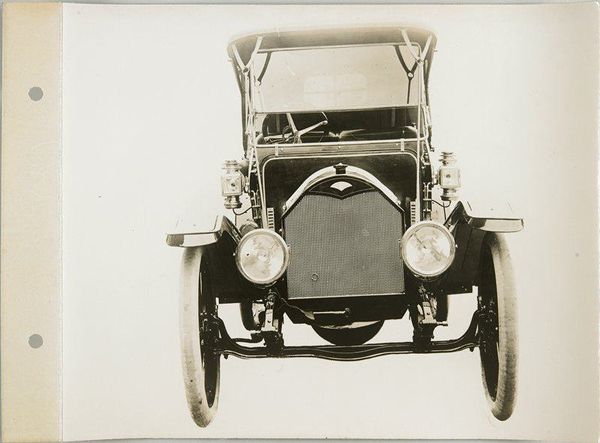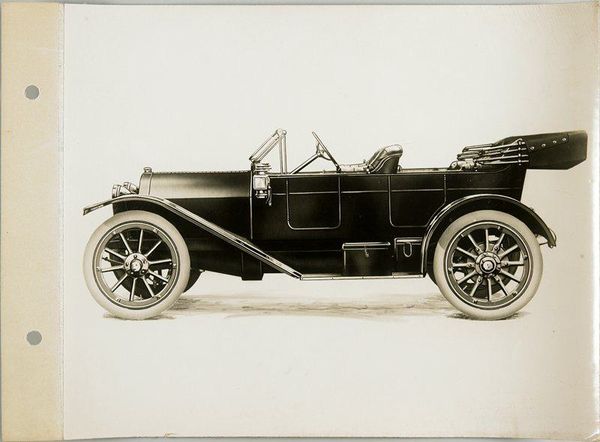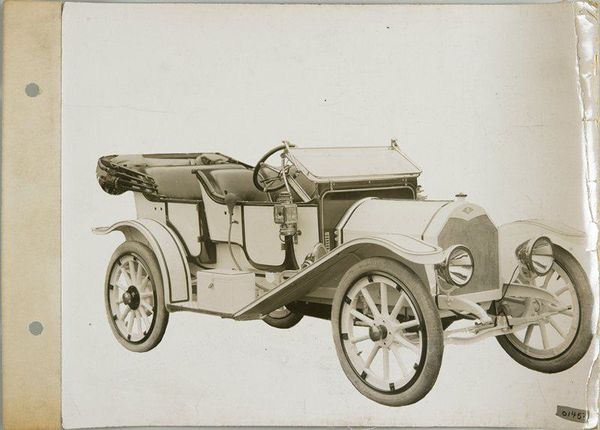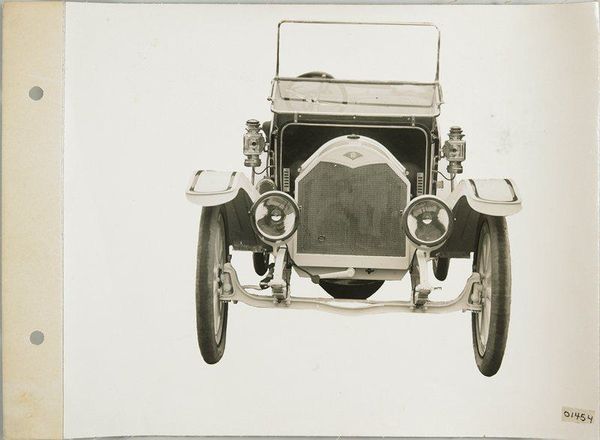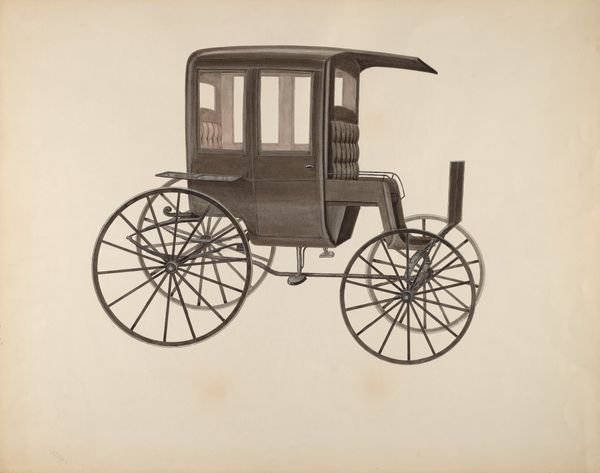
gelatin-silver-print, photography, gelatin-silver-print
#
portrait
#
gelatin-silver-print
#
caricature
#
photography
#
gelatin-silver-print
#
united-states
Dimensions: 7 7/16 x 9 3/16 in. (18.89 x 23.34 cm) (image)7 7/16 x 10 1/8 in. (18.89 x 25.72 cm) (mount)
Copyright: No Copyright - United States
Curator: Let's discuss this intriguing untitled gelatin-silver print, created around 1911 by Spooner & Wells. It resides here at the Minneapolis Institute of Art. What are your initial thoughts? Editor: I'm immediately drawn to its stillness and formality. The almost clinical precision of the photographic technique combined with the inherent stillness of the subject makes the image read less like a snapshot and more like a staged scene. Curator: Precisely. Note how Spooner & Wells manipulate light and shadow to emphasize the rigid geometry. The careful orchestration of forms – the rectangular windows against the circular wheels – it’s a symphony of shapes. The texture of the print adds to the depth. Editor: Speaking of textures, what is the process behind a gelatin-silver print? To understand this piece, it seems important to know the labor involved in producing the glossy finish that catches the light in certain points but is subdued and matte-like in others. Curator: It’s a delicate balance of chemistry and craft. But going back to the composition, observe the subtle diagonals at play. They lend a dynamism that prevents the picture from becoming static. Editor: Yes, it appears that while the form suggests an objective documentation of a commodity product in its era, the gelatin print evokes more a feeling of technological progression that might carry social value. This era signifies shifts in societal class where access to the latest manufactured objects provided social currency. Curator: Indeed, we see that photographic technologies allowed the means of capturing life to become widespread to society. This one photograph holds great significance within the landscape of American social values, I find that to be rather insightful. Editor: Thinking about that era makes me consider how the consumption of gasoline contributed to labor disputes that arose in coal mining. Perhaps considering the context and the labor that goes into each product shifts the value, or the weight of what objects hold beyond just aesthetics. Curator: That is insightful, an appreciation of the complex structures that lay outside what the artwork portrays. Editor: This conversation shifts my thinking about objects themselves, beyond just aesthetic appearance. Curator: Indeed. A fine way to reflect upon this artwork from Spooner & Wells.
Comments
No comments
Be the first to comment and join the conversation on the ultimate creative platform.
